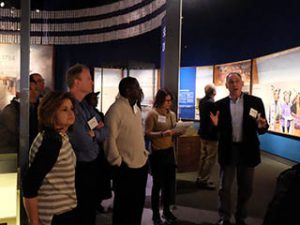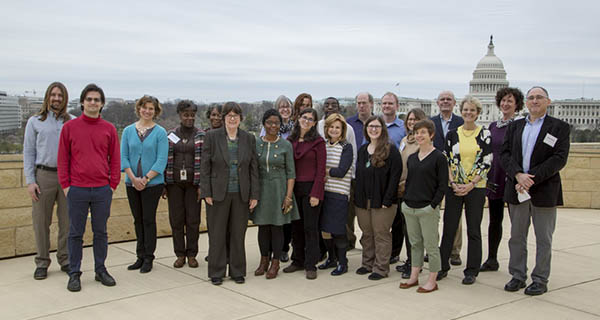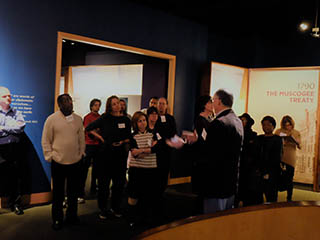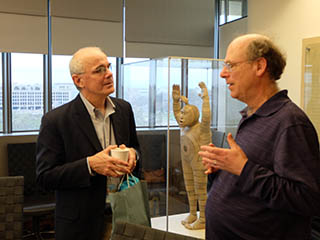By Professor Tiffany Banks On Tuesday, September 30th , students from my COMM 108: Foundations…

Following Spring Break, our museum visits continued, with our next stop being the National Museum of the American Indian (NMAI). The afternoon began with a presentation by Dr. David Penney, Associate Director of Museum Scholarship at NMAI. He reminded the group that the American public is largely ignorant about Native Americans. Many of the stories and narratives that people have been taught are filled with inaccuracies and misperceptions. Part of the Museum’s mission is to help correct this narrative, while also helping the public understand how the history presented at NMAI, is a shared history of all of us.
His presentation provided an overview of the unique relationship that was set in place between the United States and the Native Americans as the new nation was being established. A conscious decision was made that there would be two separate nations, and that relations between the two would be governed by treaties. This point is important, since based on the U.S. Constitution, the Federal Government has the exclusive right to make treaties with foreign nations, and those treaties override state laws. His talk was followed by a tour of the Nation to Nation exhibit, which presents the complicated history of the two nations, from the days of the founding of the U.S when many of the treaties were signed, to the years when promises made were not kept, and on to the what is happening today as Tribes have pursued treaty rights through the courts.
His presentation and tour were supplemented by our other presenter, Dr. Mark Hirsch, Historian, NMAI. Dr. Hirsch’s insights as we moved through the exhibit added details that deepened the group’s appreciation for the story the exhibit tells. In 2016, the exhibit was awarded an Exhibition of Excellence Award from the American Alliance of Museums. This has been extremely gratifying, given that the exhibit deals with difficult social issues, something that museums have historically been reluctant to do.
On returning to the conference room, Dr. Penney and Dr. Hirsch engaged the group in a lively question and answer session touching on a variety of aspects of our theme of social justice as intertwined with this exhibit and the greater Native American story.
This led to the last part of the afternoon, where Colleen Call Smith, Education Specialist (Materials Developer) in the National Museum of the American Indian’s Office of Education introduced us to Native Knowledge 360 (NK360), a national initiative to inspire and promote improvement of teaching and learning about American Indians. To this end, NK360 integrates technology and media into online lesson plans for teachers combined with materials and activities for students. Additionally, beginning this summer, K-12 teachers from selected states will have the opportunity to participate in a summer institute. Additional plans for the future include national advocacy and partnerships to increase awareness and further education efforts.
Needless to say, many of our Fellows left with a new perspective and thoughts of how to corporate NMAI into their classrooms.












This Post Has 0 Comments